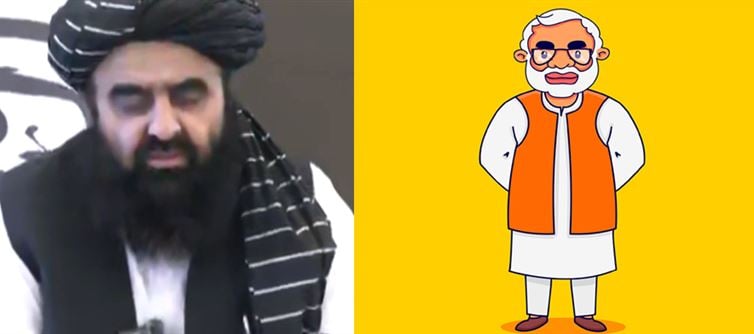
Five press conferences in forty-eight hours — by the Taliban.
Zero in eleven years — by the prime minister of India.
Let that sink in.
In the world’s largest democracy, the elected leader has managed to avoid a single unscripted press conference for over a decade, even as theocratic militants in Kabul face open questioning by indian journalists on indian soil.
It’s not irony anymore — it’s institutionalized fear of accountability, broadcast in 4K.
1️⃣ The World’s Most Talked-About Silence
In eleven years as prime minister, Narendra Modi has not held even one open press conference. Not one. The man who addresses millions through holograms, hashtags, and handpicked interviews has never stood before a room of journalists allowed to ask real, unfiltered questions. The world calls that “authoritarian discretion.” india calls it “strong leadership.”
2️⃣ Meanwhile, the Taliban Took the Mic
Last week, Taliban representatives — yes, the same regime notorious for censorship — faced indian journalists five times in two days during their diplomatic visit. No pre-screened questions. No planted praise. Just reporters doing what reporters do. When the Taliban appears more open to scrutiny than the prime minister of the world’s largest democracy, you know something has inverted reality itself.
3️⃣ Democracy Without Dialogue
press conferences are not photo ops — they are accountability rituals. They test leadership under real questions, not rehearsed slogans. But in Modi’s india, democracy has been reduced to a monologue. “Mann Ki Baat” replaced debate. “Masterstrokes” replaced transparency. Eleven years of governance, zero direct engagement — and somehow, the applause still echoes.
4️⃣ 99% media, 0% Questions
With nearly the entire mainstream media tamed, bought, or bullied into silence, Modi doesn’t need to face the press — the press faces him on his terms. From “friendly anchors” to choreographed interviews, every appearance is an infomercial disguised as journalism. Critics call it the North Korea model with better production value.
5️⃣ The Fear of Being Asked
What exactly is the prime minister so afraid of?
Unrehearsed questions about unemployment? About inflation? About Adani? About China?
The absence of press conferences is not a strategy — it’s insecurity disguised as confidence, a regime allergic to dissent and obsessed with control. Silence, not speech, is the new form of strength.
6️⃣ Taliban’s Transparency > India’s Democracy?
It’s a line no indian citizen should ever have to read — but here we are. The Taliban, of all entities, demonstrated basic press engagement that India’s elected government hasn’t. Five open conferences versus eleven years of carefully curated propaganda. When extremists look more transparent than democrats, it’s no longer satire — it’s history in decay.
7️⃣ The Optics of Cowardice
A leader who never faces a question mark ends up becoming one.
Modi’s silence isn’t discipline — it’s design. Every press interaction avoided, every journalist silenced, every headline softened, is part of a carefully engineered ecosystem of controlled perception.
But democracy doesn’t die with a bang. It dies with a press pass denied.
8️⃣ Democracy or Dictatorship? You Decide.
Eleven years. zero press conferences.
One man speaks. The rest clap.
If that sounds familiar, it’s because we’ve seen this movie before — in countries where criticism is treason and journalism is performance.
India, once a proud democracy of voices, is now a stage for one actor and a muted audience.
🔥 CLOSING SHOT:
When the Taliban answers questions and India’s prime minister doesn’t, it’s not just hypocrisy — it’s humiliation.
You can control headlines. You can buy airtime. But you can’t hide from history.
Because one day, the silence itself will become the loudest question — and there will be no friendly anchor left to answer it for you.




 click and follow Indiaherald WhatsApp channel
click and follow Indiaherald WhatsApp channel